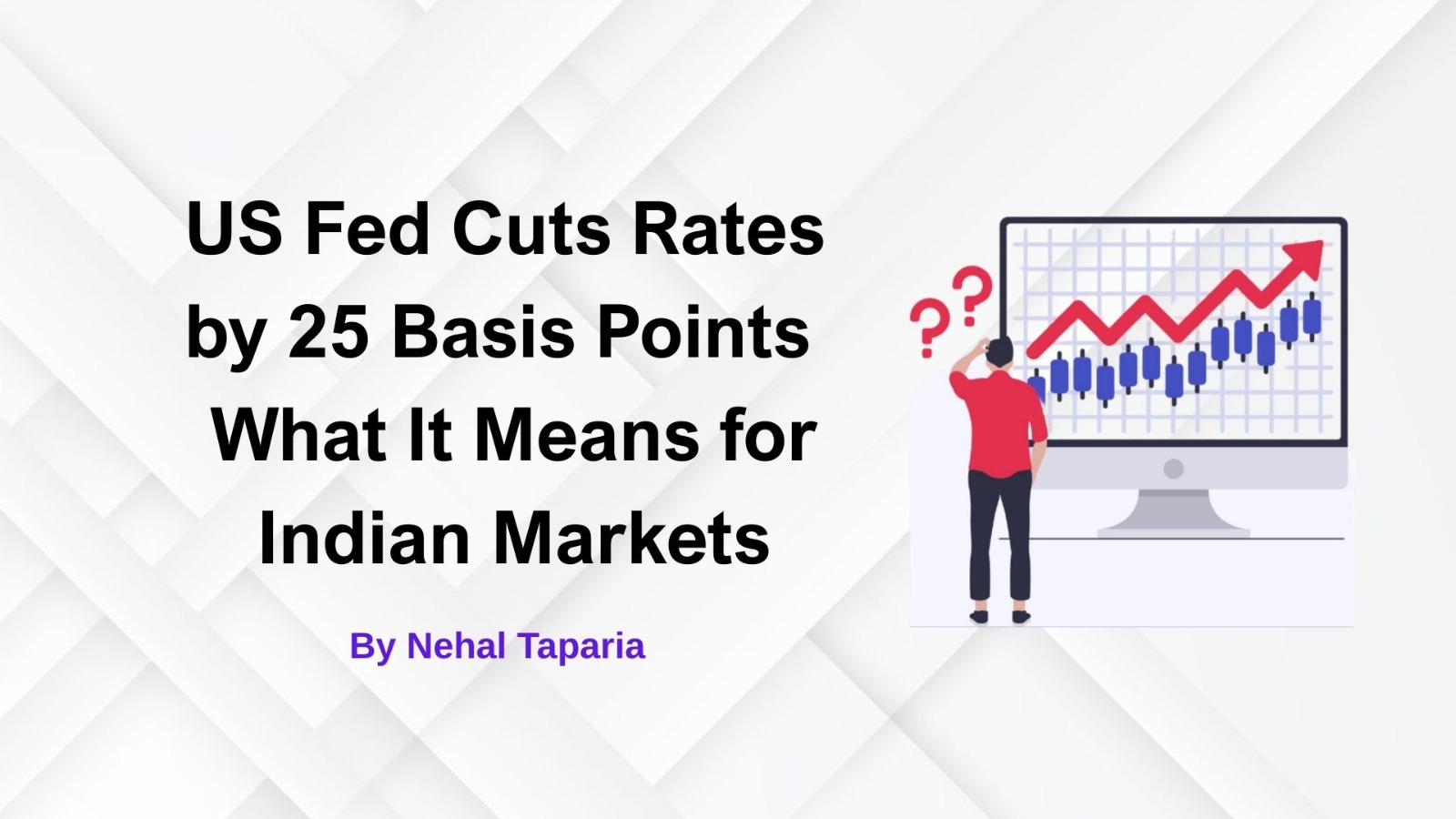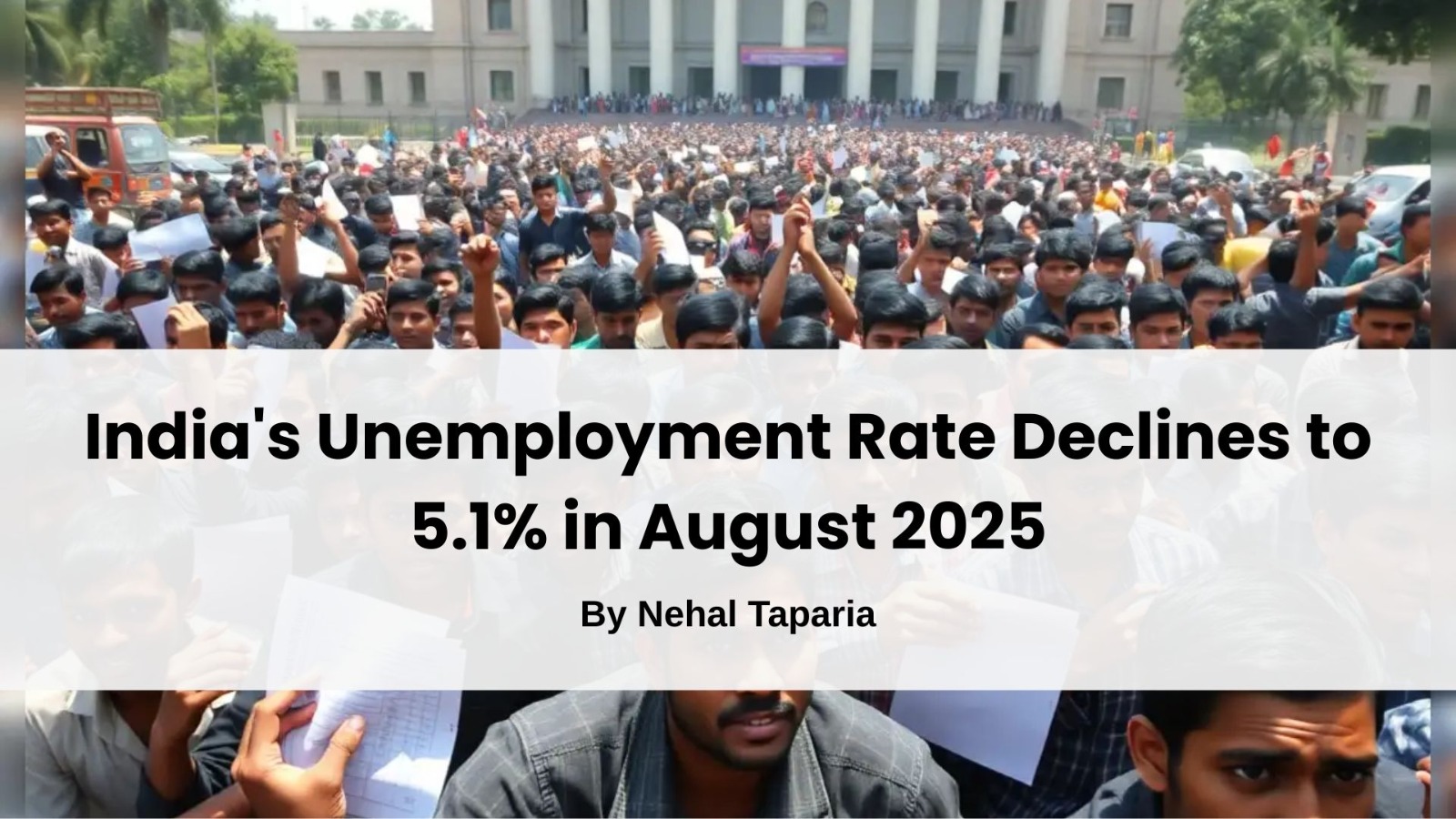Blog List

Blog List
US Fed Cuts Rates by 25 Basis Points – What It Means for Indian Markets
On September 17, 2025, the U.S. Federal Reserve implemented its first interest rate cut of the year, reducing the federal funds rate by 25 basis points to a range of 4.00%–4.25%.
IndiaAI Mission Set to Receive ₹20,000 Crore Funding Boost: Implications for the Indian Market
The Indian government's IndiaAI Mission is poised for a significant expansion, with plans to double its funding to ₹20,000 crore over the next five years.
India's Exports to the US Decline by 14% in August 2025: Implications and Market Impact
India's exports to the United States experienced a 14% month-on-month decline in August 2025, totaling USD 6.86 billion.
India’s Trade Performance in August 2025: Exports Up, Imports Down, Deficit Narrows
In August 2025, India’s foreign trade showed a significant turnaround as merchandise exports rose by 6.7% year-on-year to $35.1 billion, while imports dropped sharply by 10.12% to $61.59 billion. This resulted in a narrowed trade deficit of $26.49 billion, compared to $35.64 billion in August 2024. The performance marks a notable development amid global economic uncertainties and domestic policy adjustments.
India's Unemployment Rate Declines to 5.1% in August 2025
India's unemployment rate has decreased to 5.1% in August 2025, down from 5.2% in July and 5.6% in June, according to the latest data from the Ministry of Statistics and Programme Implementation (MoSPI).
World Bank’s IFC to Double India Investments to $10 Billion by 2030
The International Finance Corporation (IFC), the private sector arm of the World Bank Group, has announced ambitious plans to double its investments in India to $10 billion by 2030. Makhtar Diop, the Managing Director of IFC, stated that India remains one of the most promising markets for private sector growth and sustainable development.
Indian REITs Deliver 6–7.5% Yields, Outpacing US & Japan Markets: What It Means for Investors
Indian Real Estate Investment Trusts (REITs) are emerging as a compelling investment avenue, offering average yields between 6% and 7.5%, surpassing those in mature markets like the US (2.5–3.5%), Singapore (5–6%), and Japan (4.5–5.5%). This performance is highlighted in a recent report by Credai and Anarock, underscoring India's growing appeal in the global REIT landscape.
India’s Ambitious Vision – Two Public Sector Banks Among World’s Top 20 by 2047
India has set an ambitious goal: to position at least two of its public sector banks (PSBs) among the world’s top 20 by 2047.

Copyright © By Empirical F&M Academy. Design & Developed by Techno Duniya










.jpg)


.jpeg)